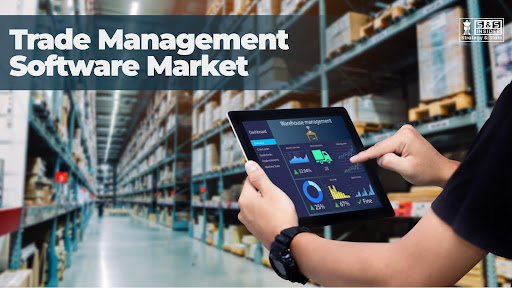In a world where cross-border trade fuels economic growth, efficiency and transparency in trade operations have become vital. Trade Management Software (TMS) is emerging as a game-changing tool that enables businesses to manage global supply chains, compliance, and logistics more effectively. With international markets becoming increasingly interconnected, leading companies are leveraging digital trade platforms to simplify documentation, track shipments in real time, and ensure compliance with ever-changing trade regulations.
As global trade expands, organizations face mounting pressure to streamline import and export processes while minimizing costs and risks. Traditional manual trade workflows—often plagued by human error, outdated spreadsheets, and disconnected systems—are no longer sustainable. Trade Management Software provides the digital backbone that modern enterprises need, offering automation, data integration, and visibility across every step of the trade cycle.
The Rising Importance of Trade Management Software
Over the last decade, trade has evolved into a high-tech ecosystem. Digitalization has redefined how businesses manage tariffs, track cargo, and maintain compliance with customs authorities. Companies involved in manufacturing, retail, logistics, and distribution are realizing that trade compliance is not just a back-office function—it’s a strategic differentiator.
Trade Management Software acts as a centralized platform connecting different stakeholders in the global trade chain. It helps companies mitigate risks related to non-compliance, optimize logistics operations, and manage customs documentation efficiently. In addition, real-time analytics and artificial intelligence are empowering companies to anticipate market disruptions, reduce delays, and enhance decision-making.
The shift toward cloud-based solutions has accelerated adoption. Modern trade software integrates seamlessly with enterprise resource planning (ERP) systems, warehouse management platforms, and transportation networks, creating a unified ecosystem for trade operations.
Market Overview and Growth Outlook
The Trade Management Software Market was valued at USD 1.1 billion in 2023 and is expected to reach USD 2.8 billion by 2032, growing at a CAGR of 10.5% from 2024–2032. This impressive growth trajectory is driven by the need for automation in global trade, the increasing complexity of international regulations, and the growing demand for efficient cross-border operations.
As emerging economies expand their export capabilities, more organizations are turning to digital trade tools to maintain compliance and gain a competitive edge. Furthermore, the rise in free trade agreements and regional partnerships is encouraging enterprises to adopt systems capable of managing tariff preferences, trade documentation, and shipment visibility across continents.
Key Drivers Transforming the Industry
Regulatory Complexity:
With global trade governed by constantly evolving laws and standards, compliance management has become one of the top challenges for exporters and importers. Trade Management Software helps businesses stay updated with customs codes, duty rates, and restricted party lists, significantly reducing the risk of penalties and shipment delays.
Supply Chain Visibility:
In today’s globalized economy, visibility is crucial. Organizations need to know the status of shipments, customs clearance updates, and logistics costs in real time. Modern TMS platforms provide dashboards and analytics that deliver transparency across the entire supply chain, enabling proactive decision-making.
Automation and Efficiency:
Automation lies at the heart of trade transformation. By digitizing documentation, automating classification codes, and streamlining trade workflows, businesses save significant time and operational costs. The result is faster order fulfillment and fewer compliance errors.
AI and Predictive Analytics:
Artificial intelligence and data-driven insights are helping companies anticipate disruptions such as port congestion, tariff changes, and geopolitical shifts. Predictive analytics integrated into TMS platforms allows trade managers to model various scenarios and prepare contingency plans well in advance.
Leading Trade Management Software Companies Driving Innovation
Several global players are setting benchmarks in this industry by integrating advanced technologies into trade solutions. These include multinational software giants and emerging innovators focusing on niche trade challenges.
SAP, Oracle, and Thomson Reuters are leading the charge with comprehensive trade management modules integrated into their enterprise ecosystems. These platforms allow users to manage end-to-end trade processes, from compliance checks to customs filings and logistics management.
Meanwhile, niche players such as Amber Road (now part of E2open), Descartes Systems, and Integration Point are innovating with AI-powered solutions tailored for complex regulatory environments. These companies focus on automating global trade compliance and improving visibility across multi-modal logistics networks.
Cloud-based providers like Infor Nexus and BluJay Solutions are reshaping how businesses collaborate with suppliers and freight partners. Their platforms are designed to provide a single source of truth for trade documentation, order tracking, and performance analytics—empowering companies to build more resilient supply chains.
Challenges and the Road Ahead
Despite its rapid growth, the trade management software industry faces several challenges. Integration complexity remains a concern, especially for enterprises operating across multiple legacy systems. Additionally, smaller businesses often perceive TMS as costly, although scalable cloud-based solutions are beginning to make adoption more affordable.
Cybersecurity and data privacy are also critical concerns. With sensitive trade information flowing through digital systems, ensuring data integrity and compliance with international privacy regulations is essential.
However, these challenges are also opportunities for innovation. Vendors are investing heavily in secure cloud infrastructure, blockchain-enabled traceability, and AI-driven risk assessment tools to enhance platform reliability.
The Future of Digital Trade
As globalization evolves in the age of automation and AI, Trade Management Software will become the cornerstone of borderless business operations. Companies that embrace these technologies will gain a competitive edge—ensuring compliance, improving visibility, and fostering collaboration across global networks.
Sustainability is also shaping the next wave of trade digitalization. Firms are using software-driven insights to monitor carbon footprints, optimize routes, and make environmentally responsible trade decisions. Governments and industry bodies are increasingly supporting these initiatives, promoting sustainable and transparent supply chains.
In the coming years, the convergence of AI, blockchain, and advanced analytics will push trade management beyond compliance and logistics into a realm of predictive, autonomous operations. Organizations adopting these systems will be better equipped to navigate uncertainty, reduce risk, and unlock new growth opportunities in the evolving global trade landscape.










